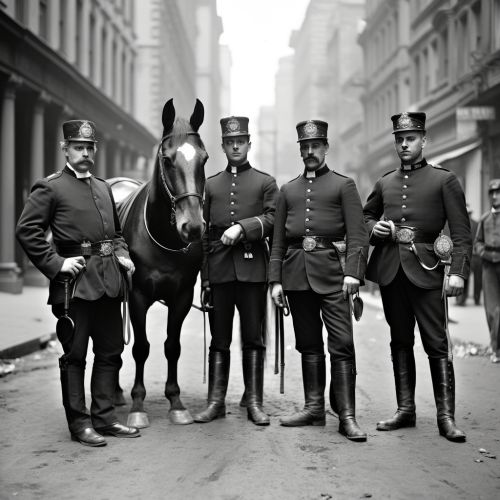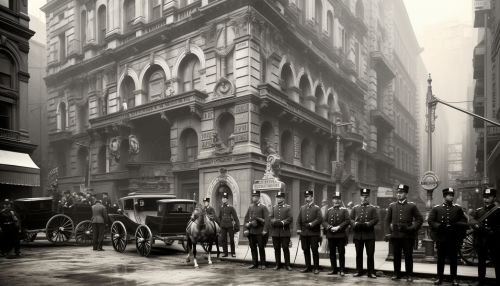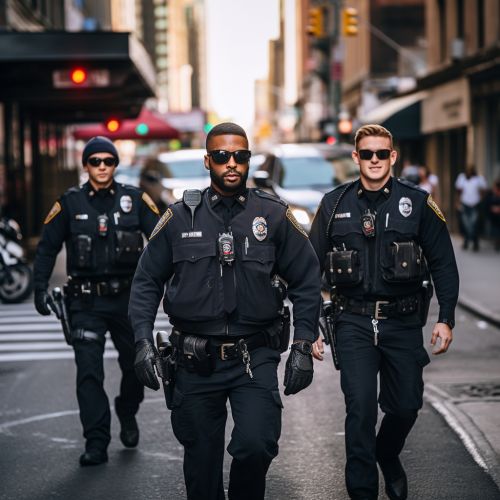New York Police Department
History
The NYPD was officially established in 1845, but its roots trace back to the establishment of the Night Watch by the Dutch in 1625. The Night Watch was a group of volunteers tasked with warning the public in cases of fire or disorder. In 1844, the New York State Legislature recommended the establishment of a police force, which led to the creation of the NYPD the following year.


The NYPD underwent significant changes in the late 19th and early 20th centuries. In 1898, the police departments of Brooklyn, Queens, and Staten Island were consolidated into the NYPD. The early 20th century saw the introduction of new technologies such as the telephone, radio, and motor vehicles, which greatly enhanced the department's ability to respond to incidents and communicate with officers in the field.
Organization and Structure
The NYPD is organized into numerous bureaus, each responsible for specific areas of law enforcement or administrative functions. The department is headed by the Police Commissioner, who is appointed by the Mayor of New York City. The Commissioner is responsible for the overall operation and administration of the department.
The department is divided into 77 police precincts, each headed by a commanding officer. The precincts are grouped into 8 Patrol Boroughs, each headed by an Assistant Chief. The Patrol Services Bureau oversees all the precincts and is responsible for the majority of the NYPD's law enforcement activities.
The Detective Bureau is responsible for investigating crimes and conducting follow-up investigations. It includes specialized units such as the Homicide Squad, the Special Victims Division, and the Organized Crime Control Bureau.
The Internal Affairs Bureau is responsible for investigating allegations of misconduct by NYPD officers. The Training Bureau provides training and education to NYPD officers, while the Personnel Bureau is responsible for recruitment, selection, and hiring.
Roles and Responsibilities
The primary role of the NYPD is to enforce the laws of New York City, maintain order, and provide services to the public. This includes responding to emergency calls, patrolling the city, investigating crimes, arresting suspects, and providing community policing services.


The NYPD also has a number of specialized units that perform specific functions. These include the Emergency Service Unit, which handles high-risk situations such as hostage situations and bomb threats; the Aviation Unit, which provides aerial support for ground units; the Harbor Unit, which patrols New York's waterways; and the Mounted Unit, which uses horses for patrol and crowd control.
Challenges and Controversies
Throughout its history, the NYPD has faced numerous challenges and controversies. These include allegations of corruption, racial profiling, excessive use of force, and lack of accountability. The department has implemented various reforms in response to these issues, including the establishment of the Civilian Complaint Review Board and the adoption of body-worn cameras.
See Also
New York City Police Commissioner Patrol Services Bureau Detective Bureau Internal Affairs Bureau
